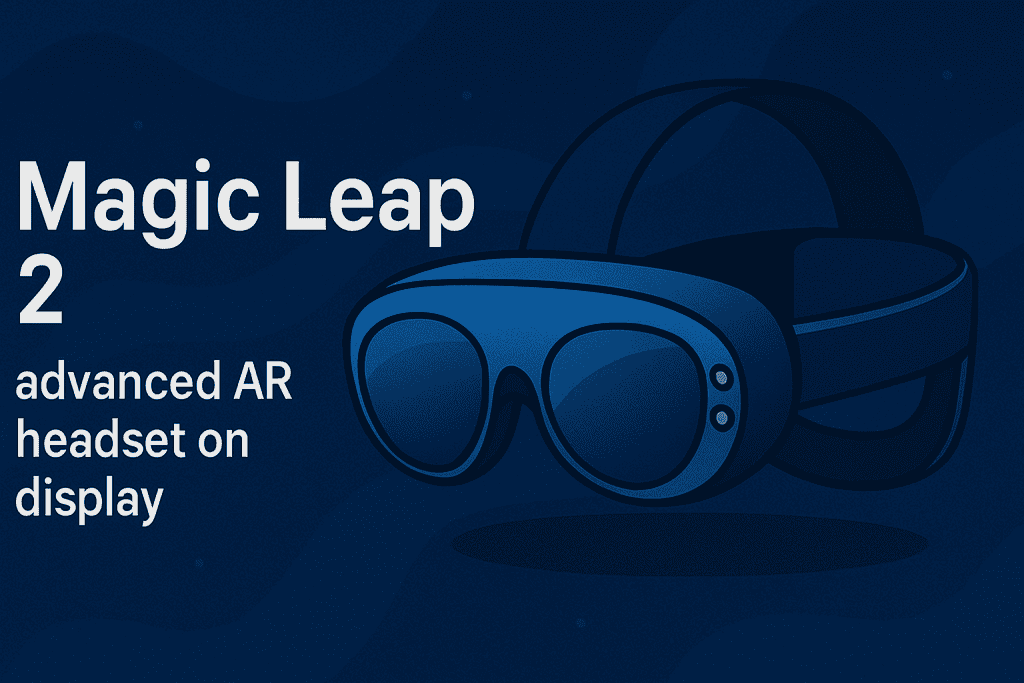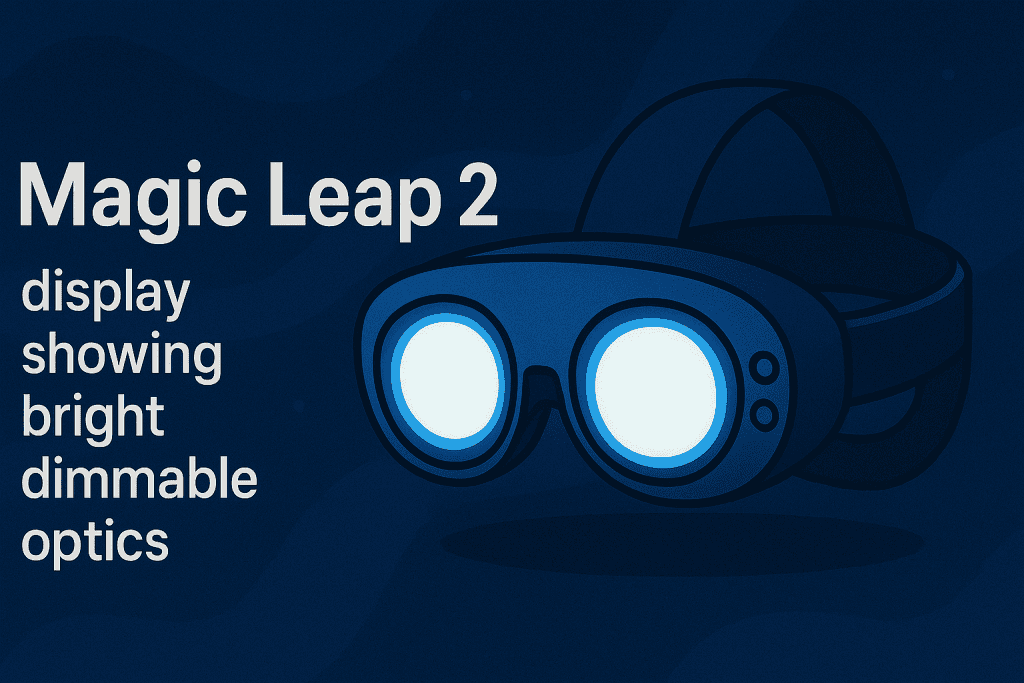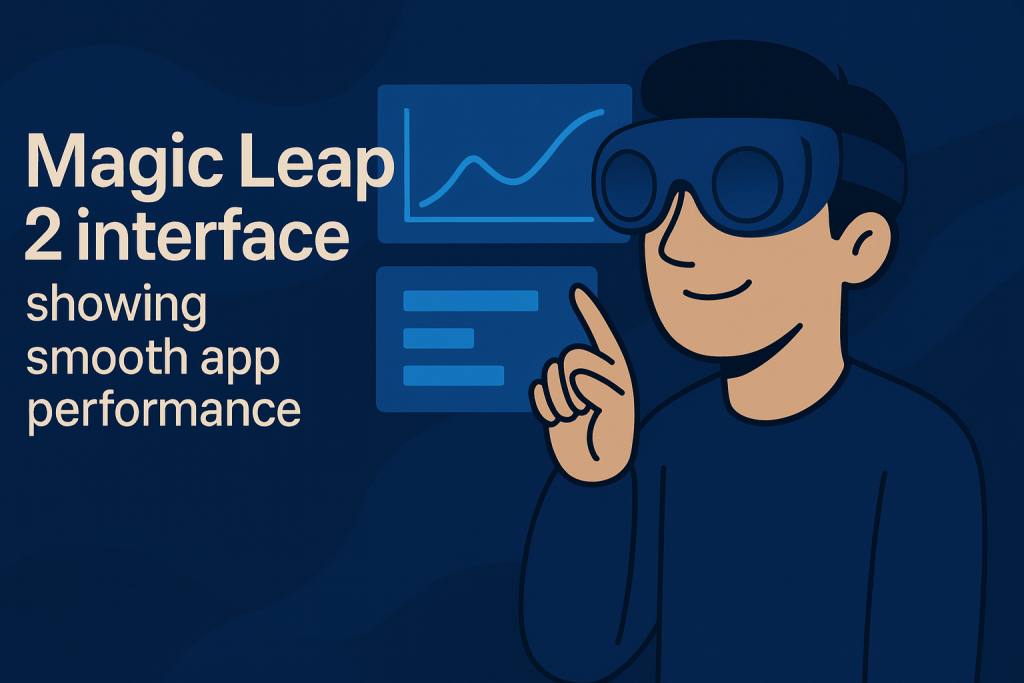
Imagine slipping on a headset that lets you merge the digital world with your physical space so seamlessly that it feels like magic. That’s exactly the promise behind Magic Leap 2, a next-generation augmented reality device aimed not just at tech enthusiasts, but at professionals who want something practical, powerful, and purpose-driven.
We decided to explore this headset because of its bold claim to revolutionize enterprise AR. With improved hardware, broader applications, and a much more polished design, it feels like the company has finally hit its stride. Whether you’re in healthcare, design, education, or manufacturing, this headset seems to promise something more. In this review, we dig deep into what makes Magic Leap 2 stand out and whether it delivers on its futuristic vision.
Overview of Magic Leap 2
At first glance, Magic Leap 2 looks sleek and minimalist. It’s designed with productivity and prolonged wear in mind. Unlike consumer-focused AR glasses that often favor flashy features over utility, this headset takes a professional tone.
Key Features:
- Display: 1440 x 1760 resolution per eye with adjustable dimming
- Field of View: Up to 70 degrees
- OS: Runs on an Android-based operating system
- Weight: Approximately 260 grams (headset only)
- Controls: Eye-tracking, hand tracking, and 6DoF controller
- Sound: Built-in spatial audio system
- Battery: Waist-mounted power pack offering 3 to 3.5 hours of use
This second-generation device improves nearly every aspect of the original while keeping its focus on industry and workplace environments.
In-Depth Analysis

Let’s take a closer look at how Magic Leap 2 actually performs when it matters most. From build quality to how it runs apps, this is where the details count.
Design and Comfort
This AR headset has been refined to feel more balanced and less front-heavy. That makes a big difference for users who need to wear it for hours at a time. Its lightweight build and adjustable fit system provide a stable and secure experience. The materials used feel solid, and the cushioning adds comfort without making the device bulky. The waist-mounted battery removes weight from the head, a smart shift from the previous version.
Display and Visual Experience
Visual clarity is where Magic Leap 2 truly shines. The dynamic dimming feature enhances contrast and readability, especially in brightly lit rooms like hospitals or classrooms. Graphics appear sharp, and digital overlays blend well with real-world surroundings. The larger field of view—an upgrade many users asked for—makes the visuals more natural and immersive.
This clarity supports more complex tasks, from reviewing blueprints in architecture to guiding medical procedures. Text is legible at various distances, and the added brightness control helps avoid eye strain during extended use.
Performance and Usability

The Android-based OS is flexible and familiar. Apps open quickly, and navigation feels intuitive. It supports multi-user sessions, and developers can easily build custom tools using OpenXR and Magic Leap’s SDK. Unlike older AR systems that felt restrictive, this one offers room to grow.
The system integrates advanced technology, including eye-tracking, spatial mapping, and gesture control, which makes interactions feel more fluid and intuitive. Whether you’re moving around a room or interacting with 3D content, it keeps up smoothly. Eye-tracking is responsive and accurate, allowing for hands-free menu navigation and user personalization.
Audio Experience
The spatial audio creates a sense of depth that adds to the overall immersion. It’s not just sound—it’s directional and smart. For example, if a virtual object is behind you, the sound feels like it’s coming from that direction. This detail makes interactions more lifelike.
Volume and clarity are impressive for an embedded system, although noisy environments may still call for external headphones.
Battery Life and Charging
The waist-mounted battery lasts about 3.5 hours per charge. While this won’t last a full workday, it suits task-based sessions quite well. Charging is done via USB-C, and swapping batteries is quick, provided you have a spare ready. Heat management is well-handled, and the headset remains comfortable even after extended use.
Comparison
To understand the value of Magic Leap 2, it’s helpful to look at how it performs next to real-world competitors like Microsoft HoloLens 2 and Vuzix Blade 2. Here’s a side-by-side view:
| Feature | Magic Leap 2 | Microsoft HoloLens 2 | Vuzix Blade 2 |
|---|---|---|---|
| Field of View (FOV) | 70 degrees | 52 degrees | 28 degrees |
| Weight | ~260g (headset only) | ~566g | ~90g |
| Display | Dimmable Optics | Transparent Waveguide | Waveguide |
| OS | Android-based | Windows-based | Android-based |
| App Ecosystem | OpenXR, Custom Dev | Windows Store, Unity | Vuzix App Store |
| Enterprise Support | Strong | Strong | Moderate |
| Price | $3,299+ | $3,500 | $1,099 |
Magic Leap 2 stands out for its display innovation, comfort, and developer-friendly platform. HoloLens offers better integration for Windows-heavy environments, while Vuzix appeals to budget-conscious users.
Pros and Cons
Let’s break it down further to see what works well and where there’s room to grow.
| Pros | Cons |
|---|---|
| Exceptional clarity and FOV | High price point |
| Ergonomic and lightweight design | Battery could last longer |
| Solid developer tools and SDK support | Limited personal-use applications |
| Effective spatial audio and tracking | Occasional minor OS bugs |
Conclusion
Magic Leap 2 feels like a bold step forward for enterprise-grade AR. It corrects many flaws from its first version and delivers a focused, practical tool for industries that need more than just visual flair. It’s not a gadget for fun—it’s a tool for productivity, collaboration, and future-forward applications.
The price may be steep, but the features and experience offer real value. If your business or industry is exploring immersive tech, this could be the headset that finally makes the investment worthwhile.
Rating
With its polished hardware and purpose-built software, Magic Leap 2 earns high marks from us.
Rating: ⭐️⭐️⭐️⭐️☆ (4.5 out of 5)
FAQs
How does Magic Leap 2 differ from other AR headsets?
Magic Leap 2 offers a wider field of view, sharper visuals, and better brightness control than many of its competitors. It also features advanced spatial computing tools tailored for business and enterprise use.
Can Magic Leap 2 be used for remote collaboration?
Yes, Magic Leap 2 supports apps that enable remote teamwork. Users can share views, annotate virtual content, and communicate in real time, making it ideal for distributed teams or on-site training.
Is Magic Leap 2 suitable for everyday consumer use?
While technically possible, Magic Leap 2 is not designed for everyday personal use. It’s best suited for professional environments like healthcare, manufacturing, and design where AR can solve real-world problems.
Resources
- Engadget. Magic Leap 2 AR headset tech dive
- ArborXR. Magic Leap 2 Review
- The Verge. Magic Leap 2 hands-on review
- VR Expert. Magic Leap 2 Review
- CNET. Magic Leap 2 Hands-on AR Glasses
